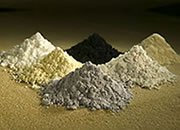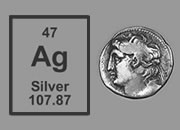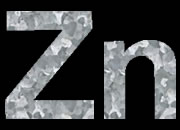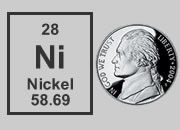Home » Metals » Uses of Nickel
Facts About Nickel
Nickel Uses, Resources, Supply, Demand, and Production Information
Republished from a USGS Fact Sheet from March 2012
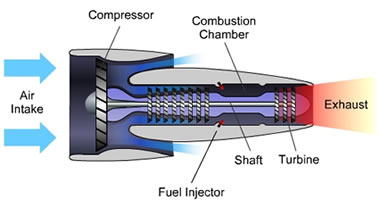
Nickel in jet engines: Nickel alloys are used in the turbine blades and other parts of jet engines where temperature can reach 2,700 degrees Fahrenheit and pressures can reach 40 atmospheres. Illustration from NASA.gov.
What is Nickel?
Nickel is a silvery-white metal that is used mainly to make stainless steel and other alloys stronger and better able to withstand extreme temperatures and corrosive environments. Nickel was first identified as a unique element in 1751 by Baron Axel Fredrik Cronstedt, a Swedish mineralogist and chemist. He originally called the element kupfernickel because it was found in rock that looked like copper (kupfer) ore and because miners thought that "bad spirits" (nickel) in the rock were making it difficult for them to extract copper from it.
Nickel is an essential trace element for some animals. Some people are sensitive to nickel and may develop contact dermatitis if their skin comes in close contact with it. Although many nickel alloys, including stainless steel, do not cause health problems, special precautions must be taken to ensure the safety of those working with certain other nickel compounds and even metallic nickel because they have been known to cause cancer.
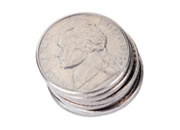 | Did You Know? The 5-cent circulating coins ("nickels") produced currently by the United States Mint contain 25 percent nickel and 75 percent copper, by weight. Image copyright iStockphoto / Eldad Carin. |
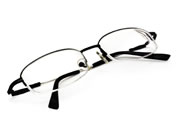 | Did You Know? Special nickel-titanium alloys, known as "shape memory alloys", are used in some eyeglass frames because they can bounce back into shape after being bent. Image copyright iStockphoto / kapishp. |
How Do We Use Nickel?
Approximately 80 percent of the primary (not recycled) nickel consumed in the United States in 2011 was used in alloys, such as stainless steel and superalloys. Because nickel increases an alloy's resistance to corrosion and its ability to withstand extreme temperatures, equipment and parts made of nickel-bearing alloys are often used in harsh environments, such as those in chemical plants, petroleum refineries, jet engines, power generation facilities, and offshore installations. Medical equipment, cookware, and cutlery are often made of stainless steel because it is easy to clean and sterilize.
All U.S. circulating coins except the penny are made of alloys that contain nickel. Nickel alloys are increasingly being used in making rechargeable batteries for portable computers, power tools, and hybrid and electric vehicles. Nickel is also plated onto such items as bathroom fixtures to reduce corrosion and provide an attractive finish.
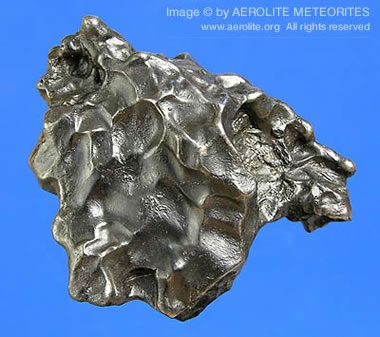
Meteorite: Most of Earth's nickel originated from meteorite impacts during the early formation of our planet. This Sikhote-Alin iron meteorite has a composition of about 93% iron, 6% nickel and 1% trace elements. Photo copyright Aerolite Meteorites / Geoffrey Notkin.
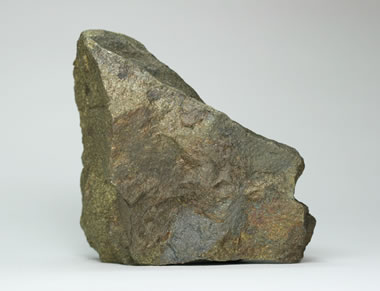
Nickel ore: A sample of nickel ore from the Sudbury Igneous Complex. This is a specimen of pentlandite in pyrrhotite approximately four inches across. USGS image.
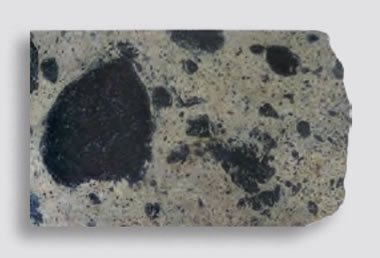
Nickel ore from the Sudbury Igneous Complex. The massive nickel ore consists of the minerals pentlandite and pyrrhotite, which surround fragments of igneous, sedimentary, and metamorphic rocks that were ripped from the walls of the crater by the impact of an extraterrestrial body. USGS image.
Where Does Nickel Come From?
Nickel is the fifth most abundant element in the Earth, but most of that nickel is located in the core, more than 1,800 miles below the surface. In Earth's crust, two major types of ore deposits supply most of the nickel used today: magmatic sulfide deposits (such as the pentlandite and pyrrhotite deposits found at Norilsk, Russia; Sudbury, Ontario, Canada; and Kambalda, Australia) and laterite deposits (including those found in Cuba, New Caledonia, and Indonesia). Also, manganese nodules and crusts on the deep sea floor may contain as much nickel as the deposits known onshore, but they are not currently being mined.
Magmatic sulfide deposits contain about 40 percent of global nickel resources and currently are the source of more than one-half of the world's nickel supply. Nickel deposits may develop if magma that contains low amounts of silica and high amounts of magnesium becomes saturated in sulfur, usually through reacting with rocks in Earth's crust. A sulfur-rich liquid may separate from the magma; ions of nickel, and some other elements, may move into it. Because the sulfur-rich liquid is denser than the magma, the liquid sinks and accumulates along the base of magma chambers, intrusions, or lava flows, where nickel-bearing sulfide minerals may then crystallize. The sulfide minerals often contain cobalt, copper, or platinum-group metals as well.
The Sudbury Igneous Complex is Canada's leading source of nickel and the second largest nickel sulfide deposit in the world. The complex is unique because it was formed when an extraterrestrial body, likely an asteroid or comet, hit Earth about 1,850 million years ago. Parts of Earth's crust near the impact melted and formed a large layer of magma in the resulting crater; nickel-bearing sulfide liquid collected along the base of the magma layer, and nickel- and copper-bearing sulfide minerals crystallized from it.
Laterite deposits host approximately 60 percent of the world's nickel resources. Laterite deposits form in warm, humid, tropical or subtropical environments when igneous rocks with low amounts of silica and high amounts of magnesium are broken down by chemical weathering. Weathering removes some of the original rock components, creating residual deposits where elements such as nickel may be concentrated.

Earth's nickel core: The average crustal abundance of nickel is only about 100 parts per million. However, Earth's inner core is thought to be an iron-nickel alloy and the outer core is a melt primarily composed of iron and nickel. USGS image.
Nickel: Worldwide Supply and Demand
| ||||||||||||||||||||||||||||||||||||||
There were no active nickel mines in the United States in 2011, although small amounts of nickel were recovered as a byproduct from processing copper and palladium-platinum ores. Several deposits in Minnesota and Michigan have potential for development.
Recycled nickel is an extremely important source of supply. In 2011, recycled nickel accounted for approximately 43 percent of U.S. nickel consumption.
Russia was the leading producer of nickel in 2011, followed by Indonesia, the Philippines, and Canada. From 2007 through 2010, Canada supplied approximately 38 percent of U.S. nickel imports followed by, in order of the amount imported, Russia (17 percent), Australia, Norway, and other countries. The bulk of the world's known nickel reserves are concentrated in Australia, Brazil, Canada, Cuba, New Caledonia, and Russia.
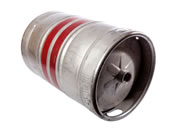 | Did You Know? Beer kegs made of nickel-bearing stainless steel often stay in use for 30 to 40 years. Image copyright iStockphoto / LICreate. |
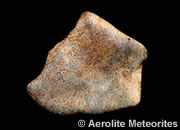 | Did You Know? Chondrites, the most common type of meteorite, contain 100 to 1,000 times more nickel than almost any Earth rock. |
Ensure Future Nickel Supplies
The United States relies on imports and recycling for its supplies of nickel, and this situation is unlikely to change significantly for at least the next 25 years. The risk of a disruption in supply is low, however, because there are sufficient global reserves, spread across more than 10 countries, to meet projected demand for nickel for many years to come. The U.S. Government no longer holds nickel in the National Defense Stockpile. Production from laterite deposits is likely to increase as the nickel resources in existing sulfide mines are depleted.
To help predict where future nickel supplies might be located, USGS scientists study how and where nickel resources are concentrated in Earth's crust and use that knowledge to assess the likelihood that undiscovered nickel deposits may exist. Techniques to assess mineral resources have been developed by the USGS to support the stewardship of Federal lands and to evaluate mineral resource availability in a global context. The USGS also compiles statistics and information on the worldwide supply of, demand for, and flow of nickel. These data are used to inform U.S. national policymaking.
Find Other Topics on Geology.com:

|

| ||

|

| ||

|

| ||

|

|

